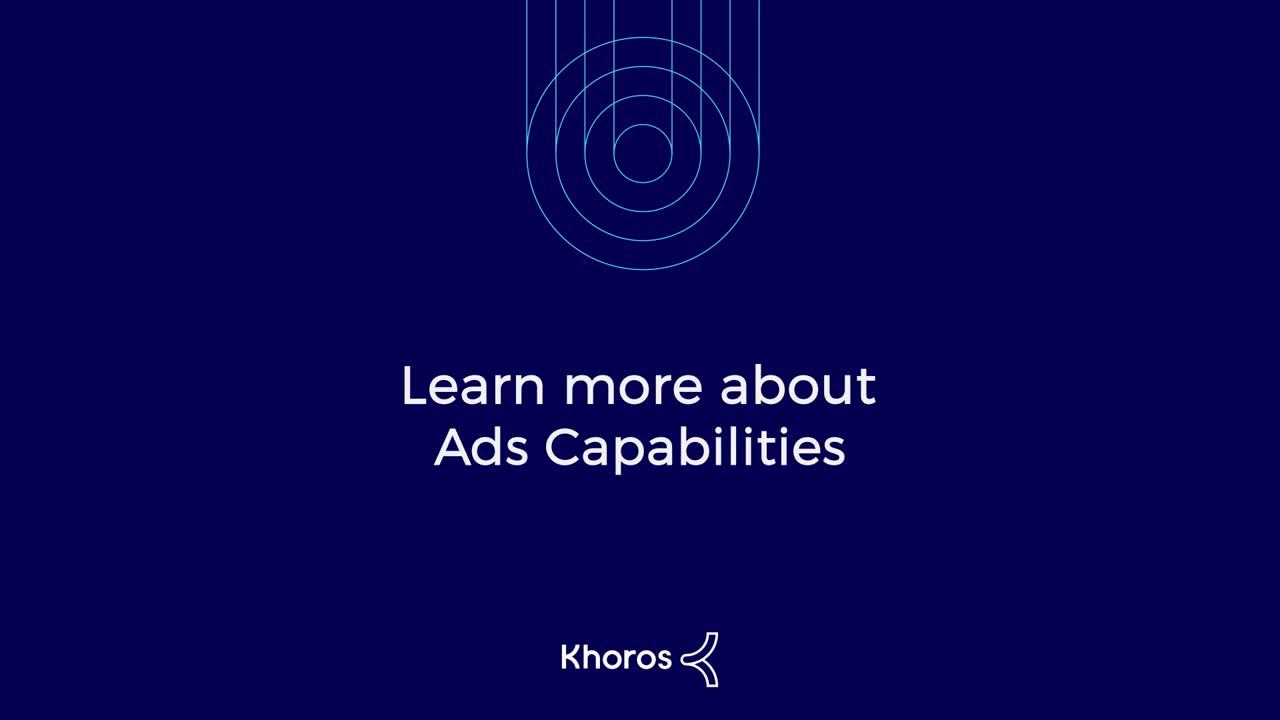 Logo
Logo
SOLUTIONS & TECHNOLOGY
Apr-24-2019
Khoros Ads Capabilities: Telling the Whole Story of Social
Kevin Morris
It’s difficult to measure the impact social media has had on the way companies interact with customers. As marketers, it’s easy to take for granted the changes that have happened over the last decade. Ten years ago the code for Instagram hadn’t even been written!
Social media is maturing, but this space is still ripe with innovation and change, and nothing is more evident than the rise of social advertising. Just how important is social advertising? Statista found that in 2018, companies spent $75 billion on social advertising, delivering 43% YOY growth. That means that one of every four dollars spent on digital advertising goes to social, and it’s only expected to grow. Next year, spend on social is projected to eclipse paid search (SEM) as the largest source of digital advertising spend, taking up 40% of global digital advertising spend.
Social is projected to eclipse paid search as the largest source of digital advertising spend by 2020.
Among CMOs, social marketing ranks as the most effective channel across the buying journey, and social ads are delivering the long sought after ROI of social. By 2023, it’s predicted that social will represent 23% of the total marketing budget for most companies.
Organic + Paid
So, what’s driving this hyper-focus on social advertising? The power of social media continues to grow. Facebook alone has 2.38 billion active monthly users. Just as the market is maturing, the way social networks monetize their platforms is evolving. Organic reach is shrinking as the leading networks ramp up their paid channels to boost platform investment. Paid social also provides marketers with more trackable ROI on their social media efforts, tying their work back to business value.
Unfortunately, over the last few years, this has caused a disconnect between organic social teams and paid social teams. This disconnect is sometimes literal, with the teams working in different locations, or brands hiring agencies to handle their paid social. The disconnect also exists in the ways each team works and communicates with customers.
At enterprise companies, social teams can be so large that while the organic team can be working on one campaign, they have little visibility into what the paid social ad team is working on. The real problem with this approach lies with constraining return on ad spend. Without a complete picture of what’s going out on behalf of their brand and how it’s performing, brands miss out on the ability to collaborate and improve business results.
Without a complete picture of what's going out on behalf of their brand, brands miss out on the ability to collaborate and improve business results.
What if the organic social team and paid social team had direct access to see what the other team was sending out, in real time? Visibility in one platform ensures a full picture of what is being planned and executed in any given social campaign. When siloed and separated, paid and organic are devaluing the overall brand story and compromising their business results.
Introducing Ad Capabilities

That’s why we built Ads Capabilities. We believe the highest potential can be found when marketers can easily view, measure, and report all social marketing initiatives across paid and organic.
Ads Capabilities is an overlay across Khoros Social Marketing (formerly known as Spredfast Conversations) that allows companies to converge organic and paid content and analytics.
- Visibility: Gain a single view of your content across ads and posts for visibility into everything going out on behalf of your brand.
- Governance: Control access to your data and understand which pages are associated with which ad accounts.
- Reporting: Augment existing marketing dashboards to include paid and organic posts together in one dashboard.
- Moderation: Use the same workflows to respond to customer comments, whether organic or paid, to ensure consistency in brand voice and customer experience.
Keep Ads Native; It’s All About the Metrics
This product is not here to replace the native tools. 85% of social ad spend is executed through native social networks, like Facebook Ads Manager. Ads Capabilities enhance the existing workflow from these native ad tools and align marketers with common visibility, reporting, governance, and moderation.
Business Value at the Core
When it comes down to it, everything we do as marketers has to provide business value, or we risk becoming an unplanned cost center. Social advertising is a big part of every marketing teams budget, and the trends show this will only continue to grow. We believe in building products that make you feel all-ways connected to your customer, your community, and your internal teams.
Reach out to set up a demo of Ads Capabilities.











